On our first European trip, San Marino was part of our original itinerary. We were supposed to visit on a day trip from Florence. We did reach Italy, but we got so distracted by Tuscany that we never made it to San Marino. Filed it under “Maybe next time”.
Three years later, “next time” finally happened.
Completely landlocked by Italy, which harbors several famous destinations, the tiny nation of San Marino is easy to overlook. It is the fifth smallest sovereign state in the world and third smallest in Europe, next only to Vatican City and Monaco. It is also the least visited country on the continent, welcoming only 60,000 international visitors a year.
Yet, tiny as it may be, it can still fill a day’s itinerary effortlessly. In this post, we’ll share with you some of the key places to visit in San Marino. But here are a few notes to bear in mind:
- This is a walking trail. These attractions are arranged chronologically, from the first stop if you’re coming from the Piazzale Calcigni, where the San Marino Bonelli bus from Rimini terminates.
- You may skip some of these stops. We’re laying out the key attractions along the route, but if you want to skip a site for whatever reason, move on to the next stop. A few of these attractions are not open to the public but we still included them so you could admire from the outside or take photos.
- Expect a long, uphill hike and some stairs. The old town of San Marino City is perched on top of Monte Titano (Mt. Titan), so the ground is largely uneven.
- Always check the schedule of buses going to San Marino in advance. The jumpoff point to San Marino is the Italian city of Rimini. There are only six trips in a day so make sure your timing is right. For more information, READ: HOW TO GET TO SAN MARINO!
- You’ll find a sample itinerary at the end of the post. It does not include all the stops listed here due to time constraints. But feel free to follow or tweak it according to your needs and preferences.
Now that we have that out of the way, let’s start!
Convento dei Frati Cappuccini
If you’re coming from the Piazzale Calcigni bus stop and climbing to the city center, one of the first structures you’ll spot is the Convento dei Frati Cappuccini, which overlooks the first hairpin turn to the top.
This convent-and-church complex was constructed in the 16th century at the site of the old San Quirino chapel. It’s best known for its walnut-wood main altar which showcases a canvas of the Deposition of Christ, a masterpiece by Italian Mannerist painter Federico Zuccari. Also inside is an image of the Madonna of Lourdes.
Piazza Sant’Agata
From Convento dei Frati Cappuccini, follow the road to the next hairpin bend and you’ll find an arch. Walk through it and up a short alley and you’ll emerge at Piazza Sant’Agata.
This small, unassuming square is surrounded by sandstone structures including the Teatro Titano building to the left and a small portico. The centerpiece is the Girolamo Gozi Monument, which features a bronze statue of the captain regent and a bronze relief of other freedom fighters behind it.
With your back to the monument, you should see a narrow street to your right. Walk down that alley and you’ll find your next stop: The Torture Museum (Museo della Tortura).
Museum of Medieval Criminology and Torture
The Museum of Medieval Criminology and Torture (or simply the Torture Museum) exhibits over 100 death- and torment-inflicting devices including the guillotine, the knee-breaker, and the spike-crazy Inquisitorial chair.
We’ve been to similar torture museums in other cities in Europe so we skipped it. But if you haven’t seen one and you’re fascinated with the macabre, this may be worth your time.
Hours Open: Daily 10am-7pm
Entrance Fee: 8€ (6€ reduced rate)
Porta San Francesco
Fronting the Torture Museum is the Porta San Francesco, also known as Porta del Loco.
For most of its history, this iconic watchtower serves as the main gate to the city. It was erected in 1361 by the Feltresca clan, which ruled San Marino, as protection from raids by rival Malatesta family from Rimini. It bears the coat of arms of San Marino and the Feltresca family.
Chiesa di San Francesco
Just across the street is Chiesa di San Francesco (Church of Saint Francis), a Roman Catholic Church.
It’s easy to walk past it without a second look because there’s nothing grand or ornate about its facade. But this is the oldest building in San Marino as it was built in 1361 (like the city gate). Since its construction, this sandstone church has undergone several restorations.
Inside the church are a wooden 14th-century crucifix, a copper tabernacle created by Rimini artist Romolo Mulazzani, and images of saints by Ciro Parisa.
Museo Pinacoteca San Francesco
At the same site as the church is the Museo-Pinacoteca San Francesco, a museum and gallery housed in the colonnaded loggias of the cloister of the religious complex. It was opened and inaugurated in 1966.
It has two zones — sacred art museum and art gallery — which display a collection of frescoes and paintings on canvas from the 15th to 18th centuries.
Hours Open: 8AM-5PM (Monday-Friday), 9AM-6PM (Saturday-Sunday)
Entrance Fee: €3*
*If you also plan on visiting the two towers, the State Museum, and the National Gallery of Modern and Contemporary Art, you might want to purchase a multi-museum ticket which costs €10.50. If you’re visiting just one or two, then just get individual tickets.
Museo di Stato
Continue walking along the same street and in a minute you’ll reach Museo di Stato (State Museum / National Museum).
Established in 1865, the State Museum was originally housed in Palazzo Valloni until 2001, when it was moved to its current home, the Palazzo Pergami-Belluzzi. The museum exhibits around 5000 pieces of art and historic artifacts — archaeological finds, paintings, coins, medals, and porcelain, among others — all narrating the story of San Marino.
Hours Open: 9AM-5PM (Daily, 8AM-8PM in summer)
Entrance Fee: €4.50*
*If you also plan on visiting the two towers, the St. Francis Museum, and the National Gallery of Modern and Contemporary Art, consider grabbing a combined ticket which costs €10.50. If you’re only interested in just one or two, then just buy single tickets.
National Gallery of Modern and Contemporary Art
The establishment of the National Gallery and Contemporary Art sprung from the launching of the San Marino Biennale season in 1956. During this event, artists gather to showcase their artworks and masterpieces. Over 700 art pieces, in various forms and media (watercolor, photographs, sculpture, etc.), by both famous and emerging artists, are displayed here. Some of them date back to the 20th century.
Hours Open: 9AM-5PM (January 2-June 7), 8AM-8PM (June 8-September 13), 9AM-5PM (September 14-December 31), CLOSED (January 1, November 2 & December 25)
Entrance Fee: €3
Cava dei Balestrieri
Just across the National Gallery of Modern and Contemporary Art, before reaching the road curve of Via Eugippo, is the Cava dei Balestrieri (Crossbowmen’s Quarry).
It’s an outdoor theater that features carved walls and cultural events like Palio of the Old Crossbow (a crossbow competition with participants in medieval costume) in September. It’s also the site for other festivals and open-air exhibitions. Watch the show if you happen to visit during the right season.
Borghesi Monument
Erected in 1904, Monumento a Bartolomeo Borghesi is one of the city’s historical landmarks. The bronze bust of Italian antiquarian, Bartolomeo Borghesi, who spent his last days in San Marino. He was one of the founders of numismatics, which is the study of currencies — paper and coins — and medals.
The monument is located near the cable car (funicular) station. The area also serves as an observation spot where you can admire the panoramic view of the towns below and the surrounding area.
Funivia di San Marino
This is probably the most preferred mode of transportation going to the high-altitude city center, which is also the historical center. The aerial “tramway” or funicular, runs between Borgo Maggiore (base station) and the City of San Marino (upper station).
The cable car system has two gondolas, which can accommodate up to 50 people each and operate every 15 minutes. It was first launched in 1959 and has undergone two renovations/upgrades; the latest was in 2017. The travel duration from the base station to the upper station is about two minutes.
Hours Open: 7:50AM-6:30PM (November-February), 7:50AM-7PM (March & October), 7:50AM-7:30PM (April), 7:50AM-8PM (May-June), 7:50AM-1AM (July-September)
Fare: €2.80 (Single), €4.50 (Roundtrip), FREE (children with height under 1.20 meters)
Borgo Maggiore
This is the city at the base when taking the funicular. Located at the base of Mount Titano, Borgo Maggiore has the second largest population in San Marino after Dogana. The city has always been a busy marketplace.
Today, it’s considered a major shopping district in the country. It houses six parishes, Piazza Grande, and the sole heliport in San Marino.
Tourism Office Stamp
Drop by the San Marino Tourism Office to get a passport stamp! It’s not compulsory. The republic has no hard border, ergo no border checkpoints, ergo no entry stamps. But you can get a souvenir stamp for 5€. This is the only place in the world where you can obtain a San Marino stamp.
However, consider having the stamp on a separate booklet or on an expired passport instead of your current one. Some embassies take issue with unofficial stamps. You’ll risk having your passport rejected if you have souvenir tourism stamps. Better safe than sorry.
San Marino Basilica
This is the main church of the City of San Marino, the nation’s capital. This Neoclassical church’s origin dates back to the 7th century, but the present structure was built in the 1830s. The Catholic church is dedicated to the nation’s patron saint — Saint Marinus.
It’s located just behind the Tourism Office on Piazza Domus Plebis. Just beside the basilica is Chiesa di San Pietro which features a crypt that is said to house the remains of Saint Marinus.
Liberty Square & Palazzo Publico
Just a short walk from the Tourism Office, the pathway opens up to the wide Piazza della Liberta. The square features the Statua della Liberta (Liberty Statue) in the middle and the politically significant structure, the Palazzo Publico.
From the square, tourists stop to marvel at the scenic view of the city and the surrounding hills and mountains. You will find shops, cafes, and restaurants in the area.
Museum of Curiosities
The displays at the Museo delle Curiosità are not related to anything San Marino but a collection of curated out-of-this-world real-life oddities and curiosities.
The museum has three floors full of interesting displays of strange facts such as fattest man, longest beard, longest hair, tallest man, etc. The information and descriptions are written in 4-5 languages.
Hours Open: 10AM-6:30PM (may change without prior notice)
Entrance Fee: €8 (Regular), €4 (Reduced)
This is a good time to have lunch. There are plenty of food places around. If money isn’t an issue, you can dine at a restaurant for a proper lunch. If you’re on a shoestring budget, you can grab a quick bite. You can find establishments offering a quick meal for less than 10 euro.
Guaita Tower (First Tower)
San Marino has three iconic towers that are all situated atop the three peaks of Monte Titano in the city center. The nation’s flag and coat of arms both bore the image of these three towers.
The 11th-century Guaita Tower, which was shortly used as a prison, is the first and the oldest of the three. It is also the most popular. It has undergone a lot of restorations. You will also see drawings or scribbles done by the former prisoners on some walls. From the tower, you will be rewarded with a panoramic view of the city and beyond.
Hours Open: 9AM-5PM (Daily, 8AM-8PM in summer)
Entrance Fee: €3 (Guaita Only), €4.50 (Guaita and Cesta Combo)*
*If you also plan on visiting the two towers, the St. Francis Museum, and the National Gallery of Modern and Contemporary Art, consider grabbing a combined ticket which costs €10.50. If you’re only interested in just one or two, then just buy single tickets.
Cesta Tower (Second Tower)
From the First Tower, take the Passo delle Streghe, a narrow passage on the way to the Second Tower. It’s best known for its snap-worthy rock bridge that connects the cliffs.
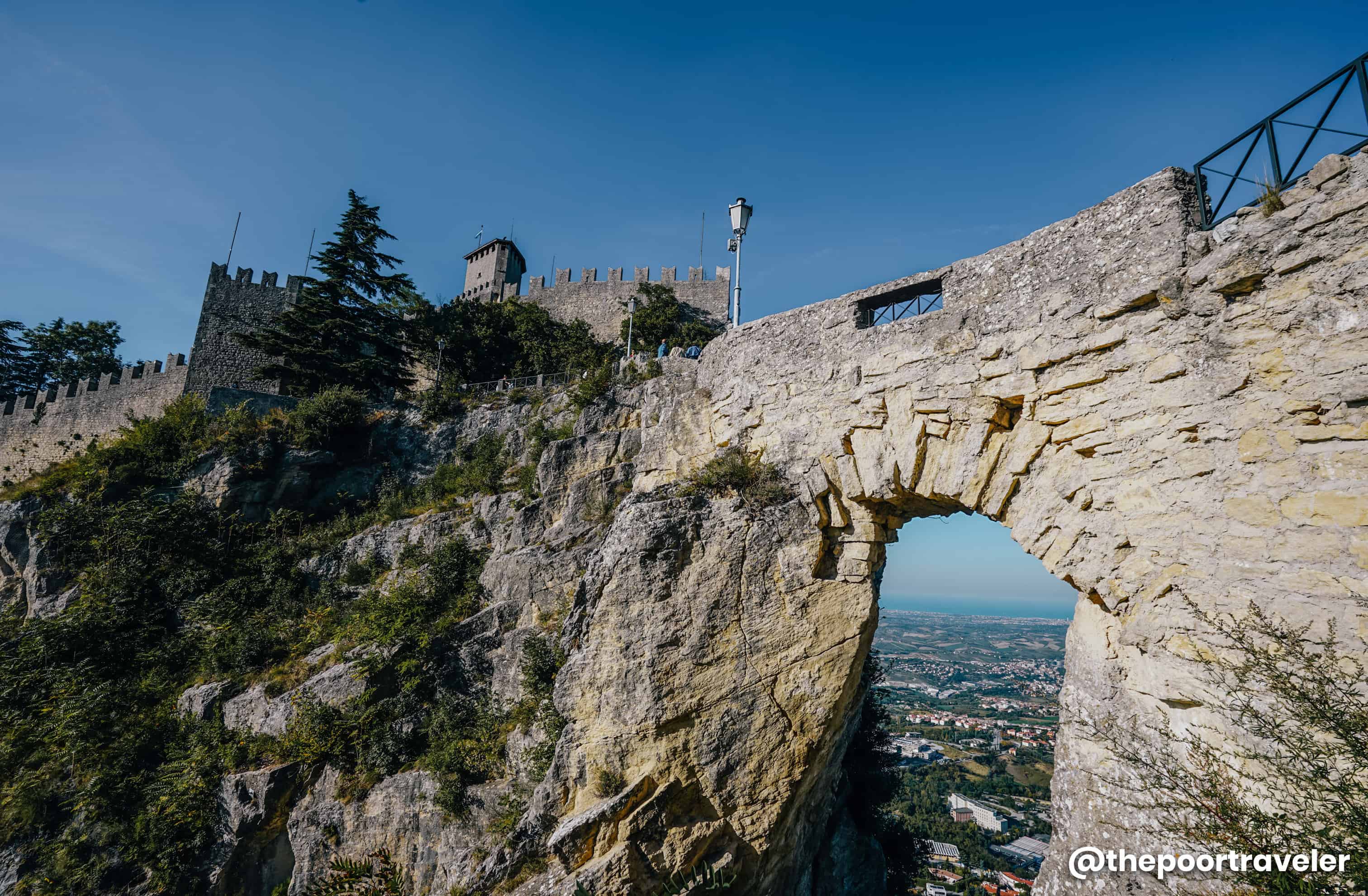
Also called Fratta but marked on Google Maps as Falesia Second Tower, the 13th-century Cesta Tower sits atop the highest peak of Monte Titano. It also features a museum, Museo delle Armi Antiche, which exhibits over a thousand items related to weaponry and artillery, encompassing those from the medieval era up to the present time. The scenery is a visual delight for those who took the time and effort to visit.
Hours Open: 9AM-5PM (Daily, 8AM-8PM in summer)
Entrance Fee: €3 (Cesta Only), €4.50 (Guaita and Cesta Combo)*
*If you also plan on visiting the two towers, the St. Francis Museum, and the National Gallery of Modern and Contemporary Art, consider grabbing a combined ticket which costs €10.50. If you’re only interested in just one or two, then just buy single tickets.
Montale (Third Tower)
The 14th-century Montale Tower is perched on the smallest peaks of Monte Titano. Tourists can’t go inside the tower as the only entryway is located about seven meters from the ground. Like Guaita, this served as a prison and might be the reason for the design and location of the door. Taking photos of the tower (and the view) from the outside is allowed.
Hours Open: 9AM-5PM (Daily, 8AM-8PM in summer)
Entrance Fee: FREE
Souvenirs
And for those who love shopping or buying souvenirs, you will pass by several shops on the way back to the bus terminal. Ref magnet collectors will have no problem finding one to add to their stash. The price for ref magnets ranges from €3.5 to €5.
SAMPLE SAN MARINO ITINERARY
Here’s a sample San Marino DIY day tour itinerary. This assumes you’ll be taking the train to Rimini Station, where you’ll catch the Bonelli Bus to San Marino. We have a step-by-step on how to get there here: RIMINI TO SAN MARINO BY BUS!
In the morning, you’ll be sightseeing on foot around the Old Town. In the afternoon, you’ll be visiting the city’s three towers before boarding the bus back to Rimini.
08:36 am – Arrival in Rimini
08:45 am – Buy roundtrip ticket to San Marino, 10€
09:30 am – Board bus to San Marino
10:30 am – Explore (follow the trail above)
12:00 pm – Lunch, 10€
01:30 pm – Visit the three towers, 6.50€
05:30 pm – Board bus back to Rimini
06:30 pm – Arrival in Rimini, grab dinner 10€
07:20 pm – Train to your origin or next destination
How you use your exploring time in the morning is up to you. You may follow the walking route above and choose the attractions you want to enter. Be mindful of the corresponding entrance fees, which are indicated in the individual descriptions.
TOP APARTMENTS & GUESTHOUSES IN BOLOGNA
Bologna is the closest metropolitan city to San Marino, so most day-trippers use it as their base. If you decide to stay in Bologna, here are some of the top-rated apartments and guesthouses in the city as scored by Agoda users.
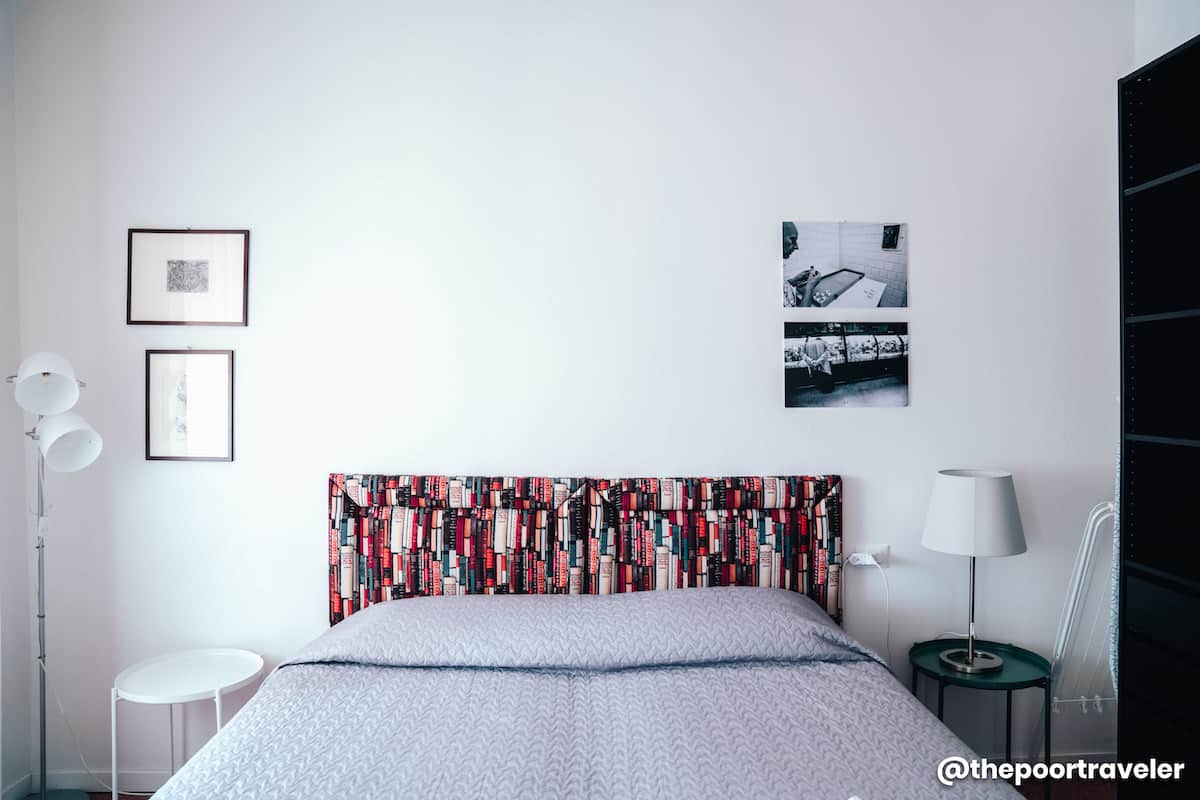
- Residence Railway by Studio Vita. Check Rates & Availability! ✅
- B&B Casa Faccioli. Check Rates & Availability! ✅
- Casa Isolani, Piazza Maggiore. Check Rates & Availability! ✅
- Le Stanze degli Angeli, Room & Breakfast. Check Rates & Availability! ✅
- La finestra sul canale. Check Rates & Availability! ✅
- Attico di Via d’Azeglio. Check Rates & Availability! ✅
Search for more Bologna Hotels!
Edited by Asta Alvarez
2020 • 9 • 6
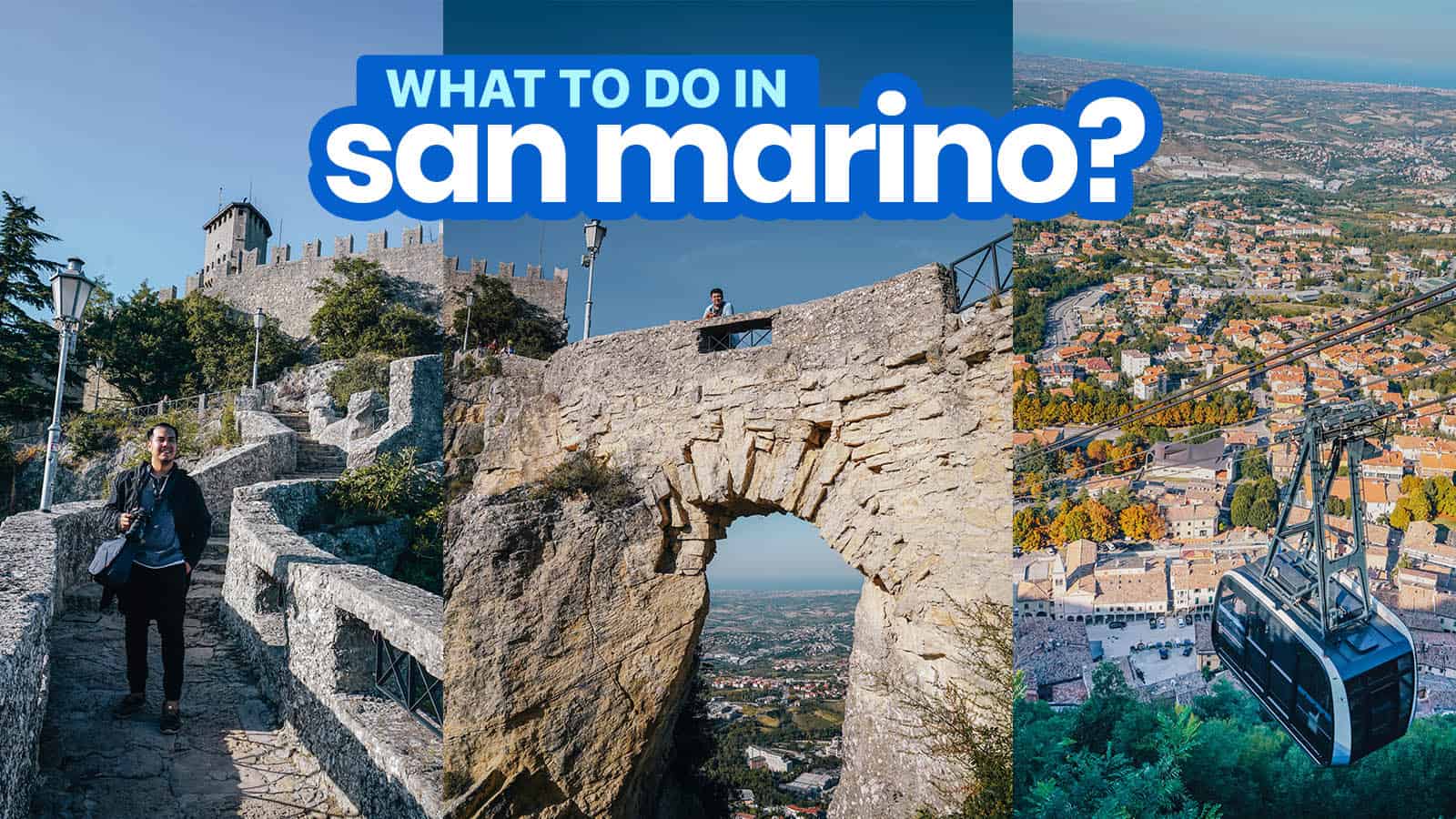


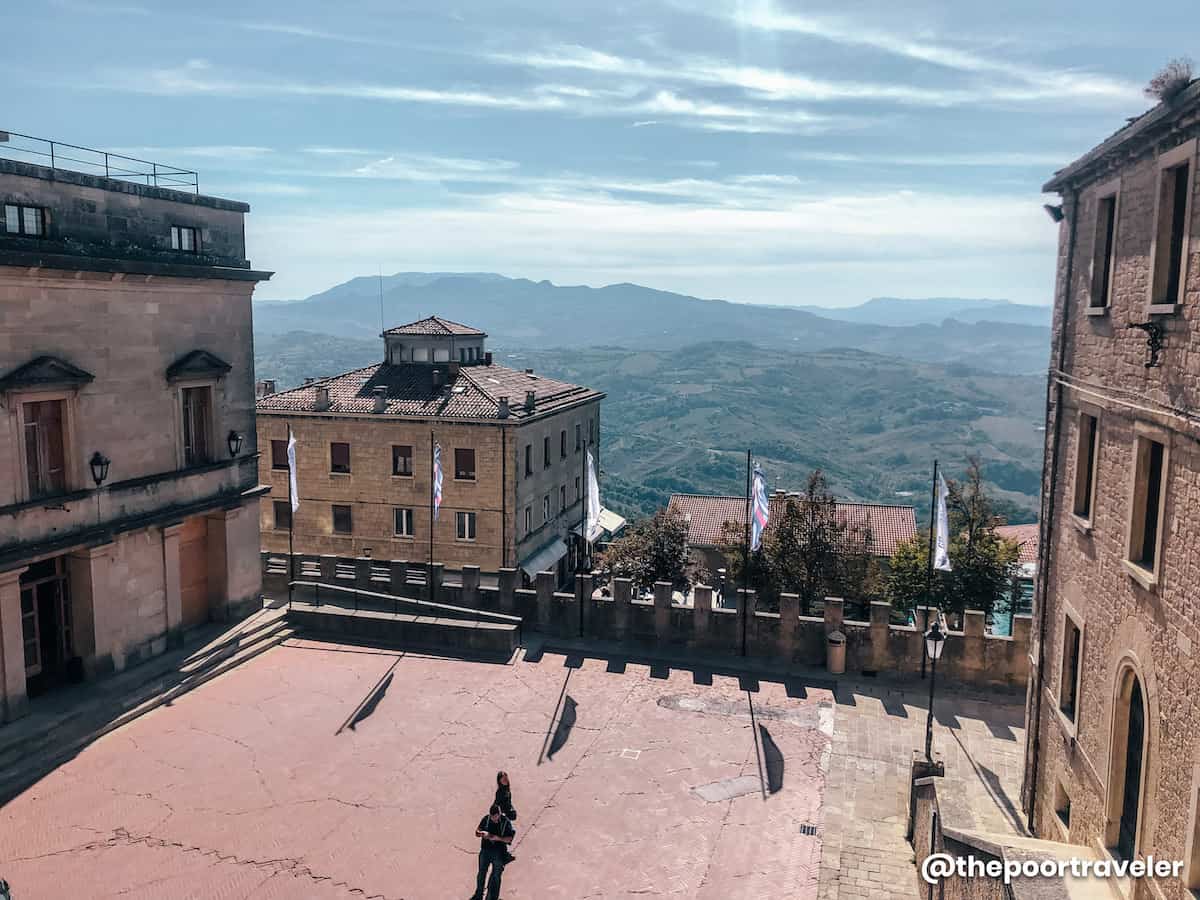
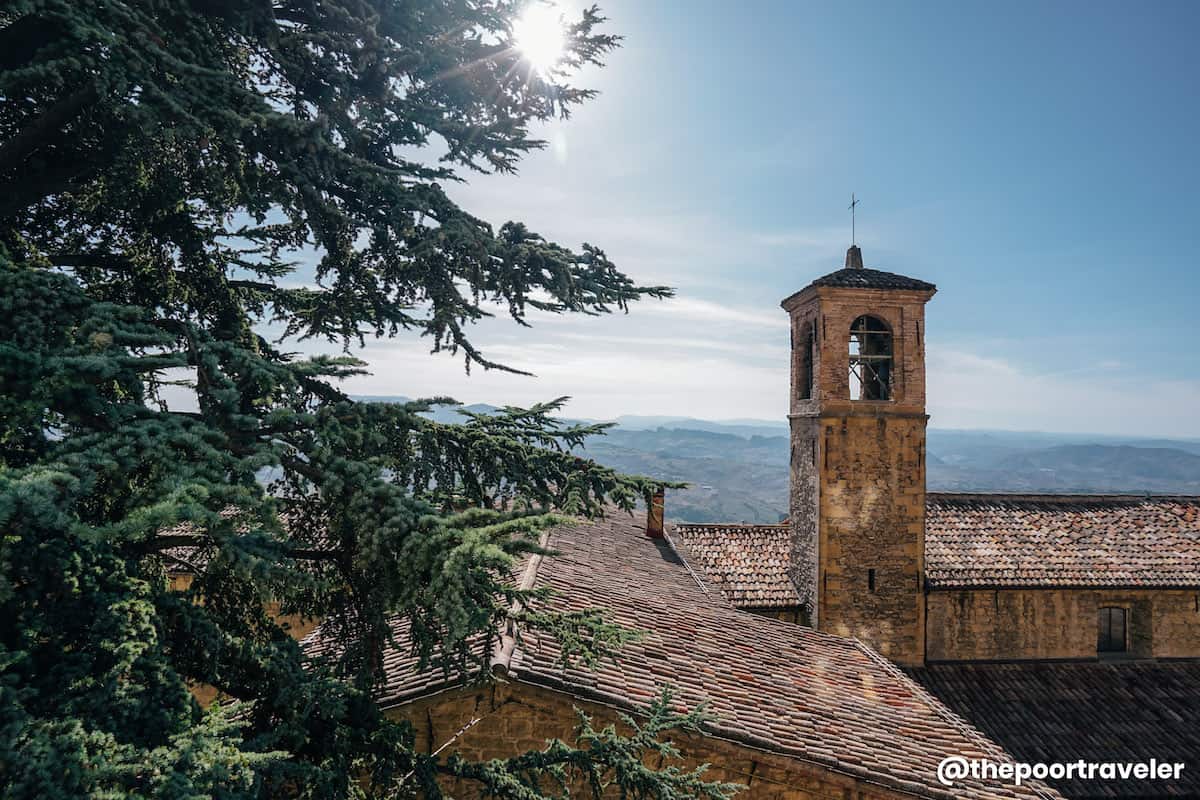
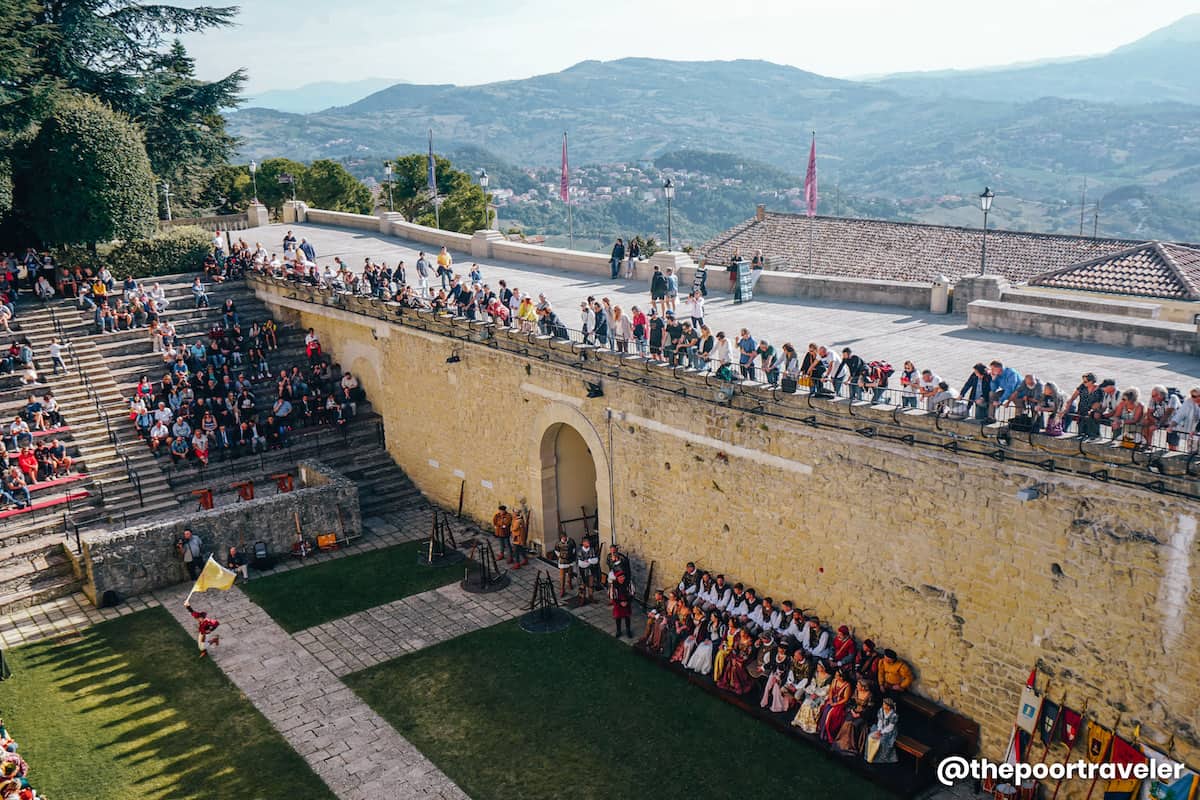
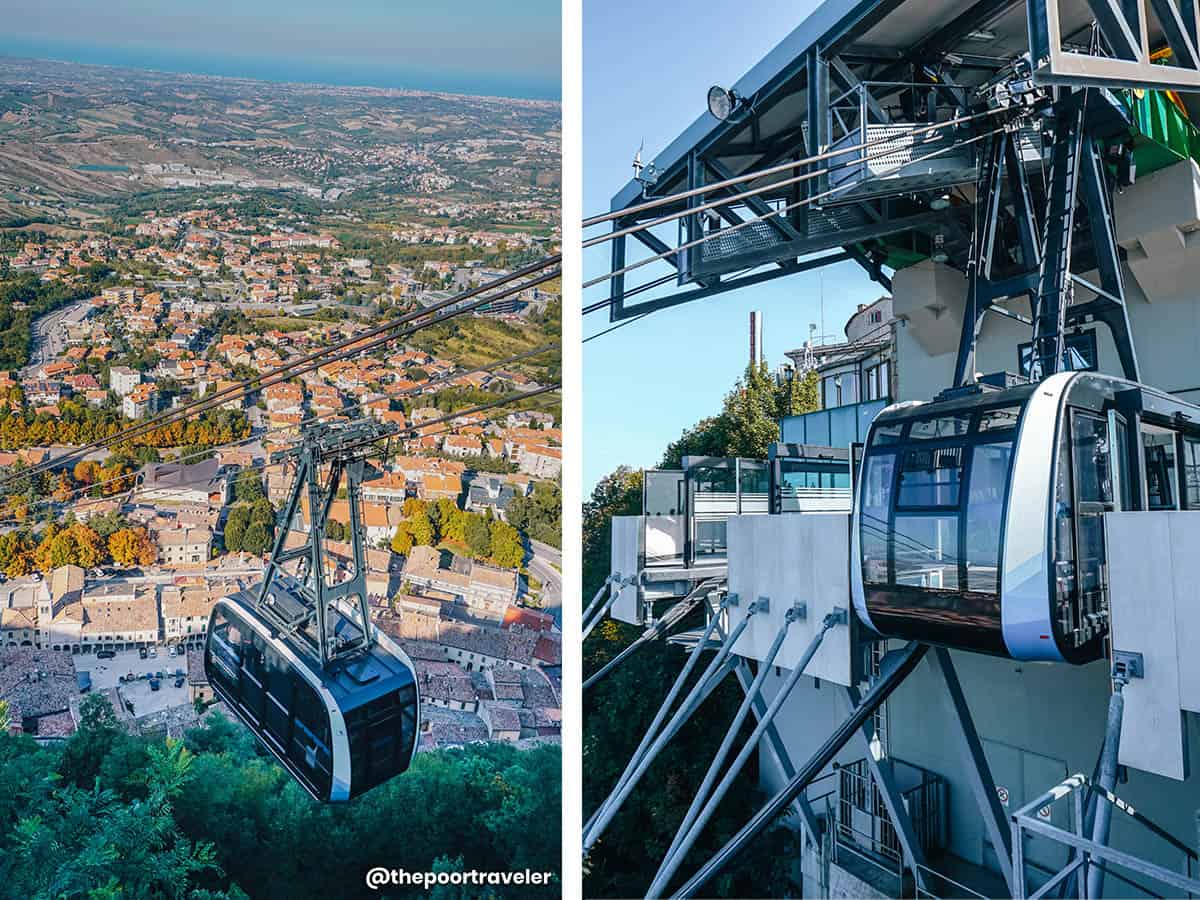
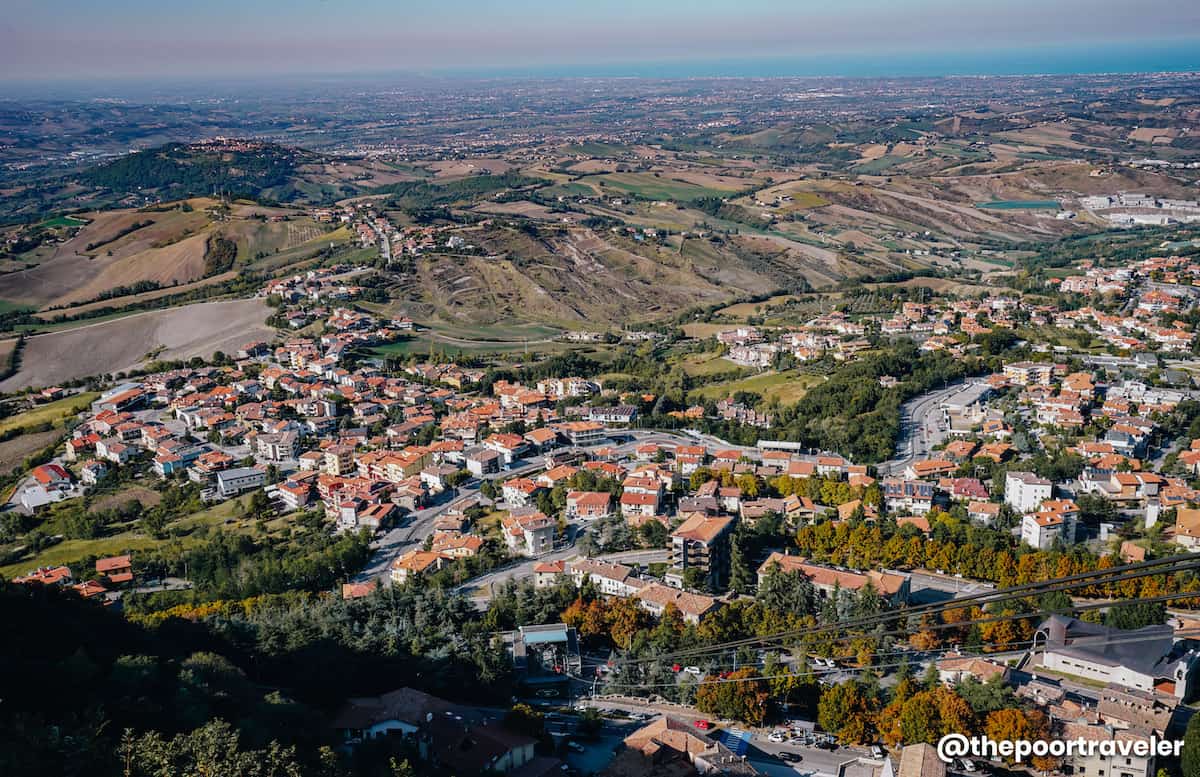
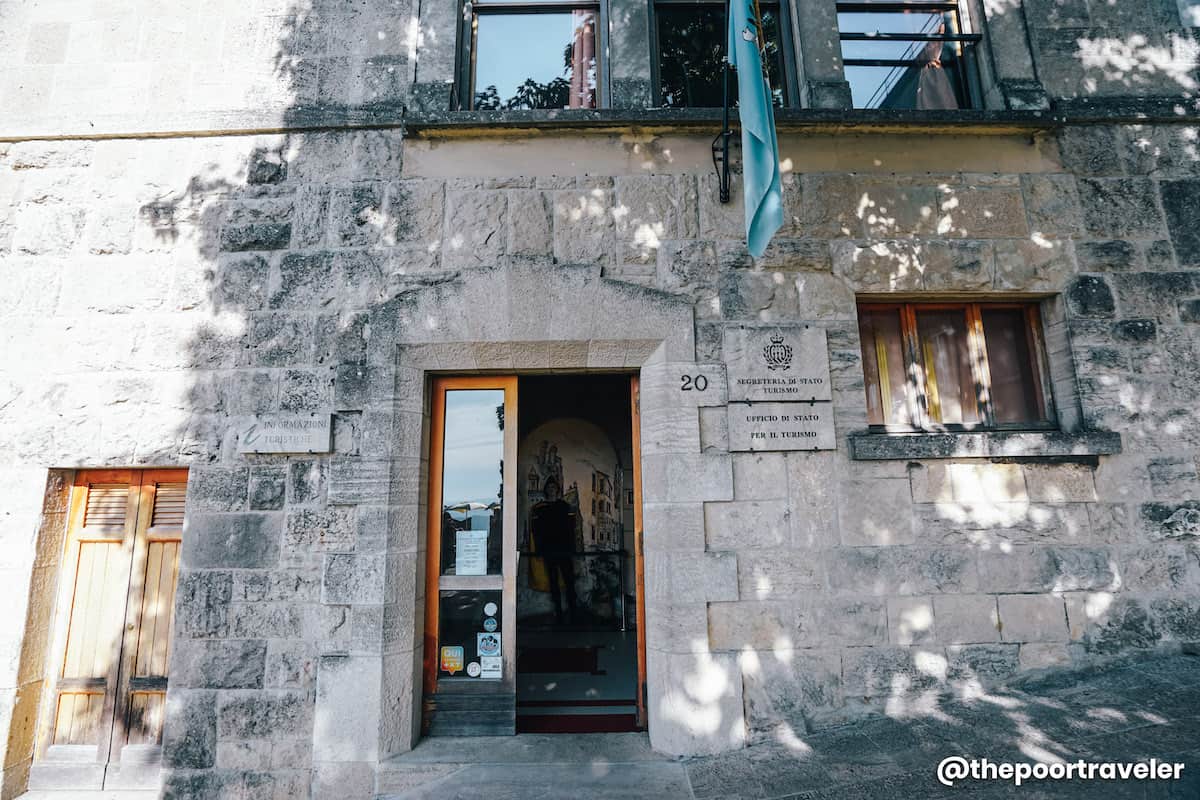
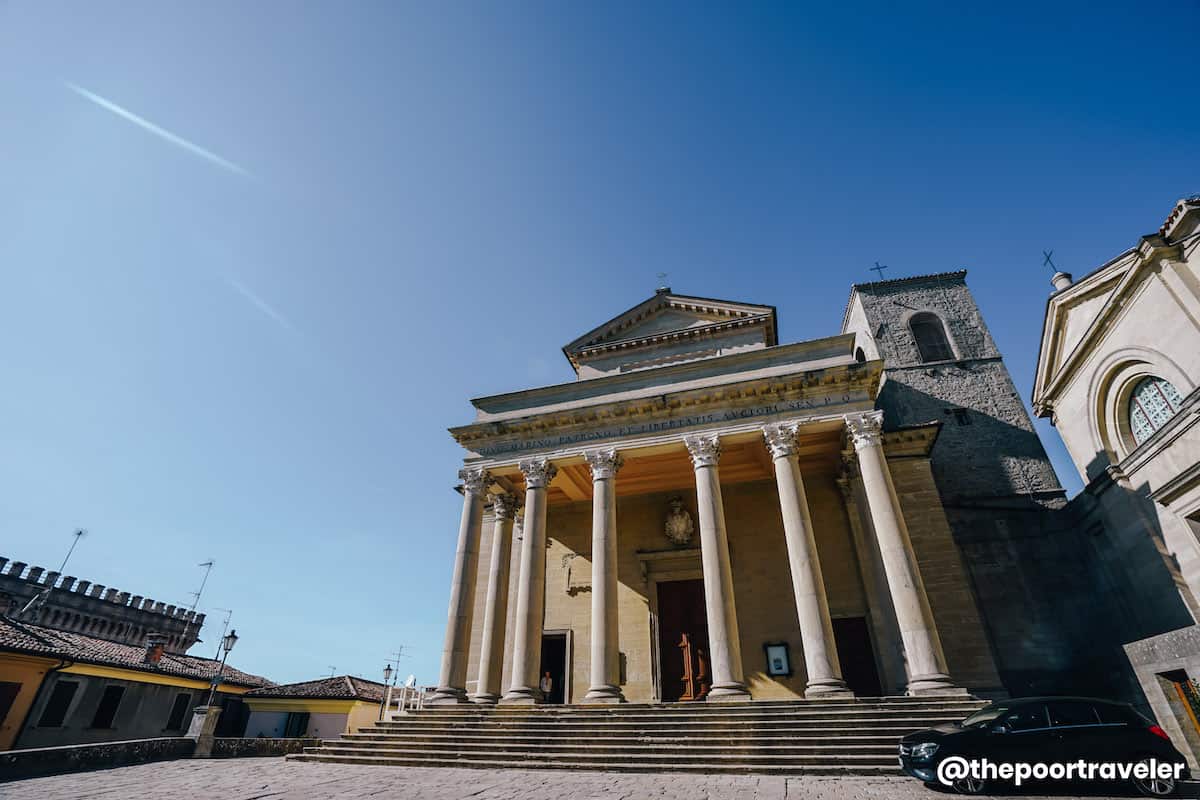
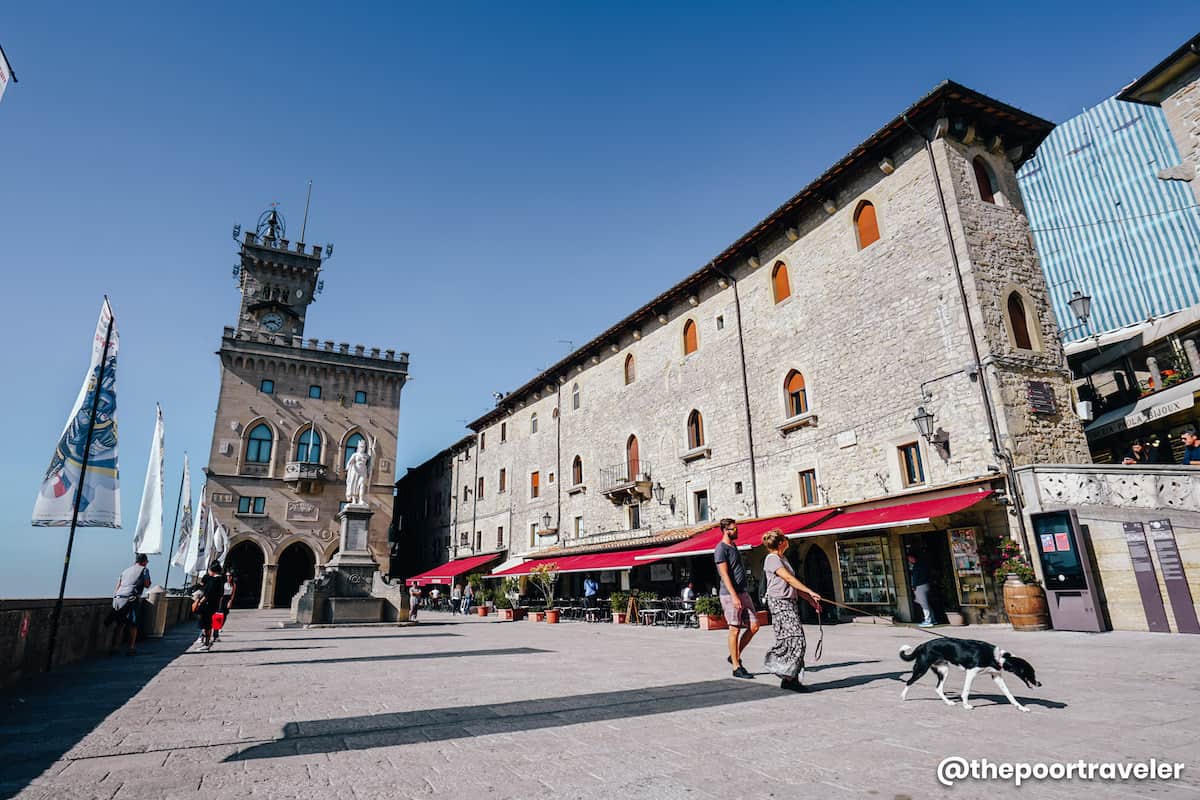
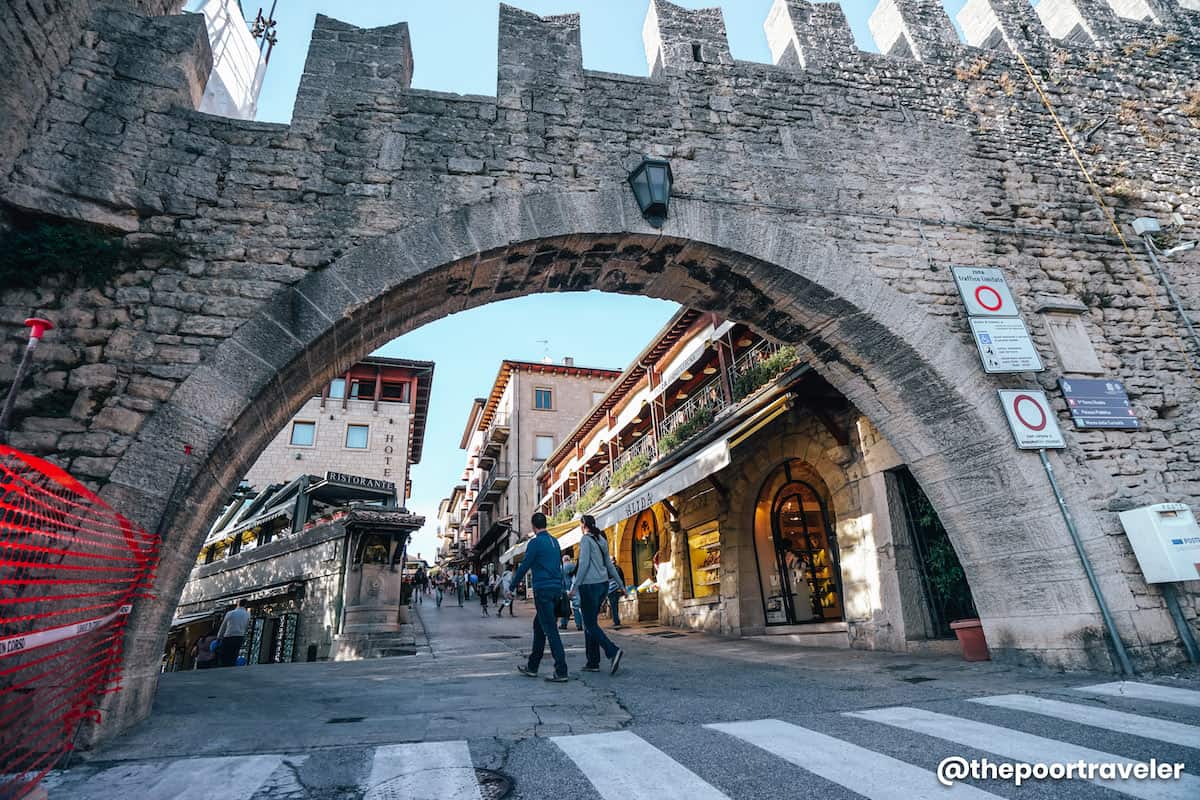
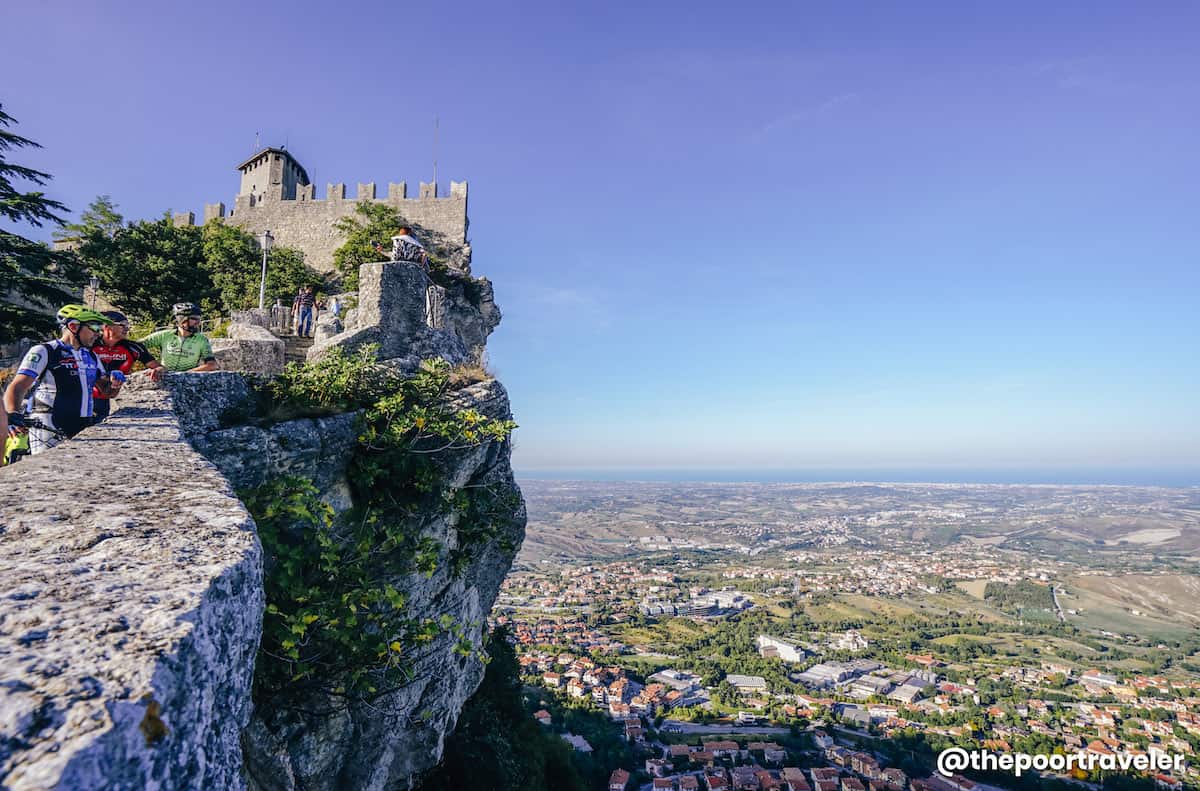





















My friends and I are interested in going to San Marino thanks to your video. Are there any places you would recommend where we can run? We are runners. Thanks
Hi JC, unfortunately, dunno any in San Marino. I think in Bologna, there’s a popular trail that’s OK for runners.